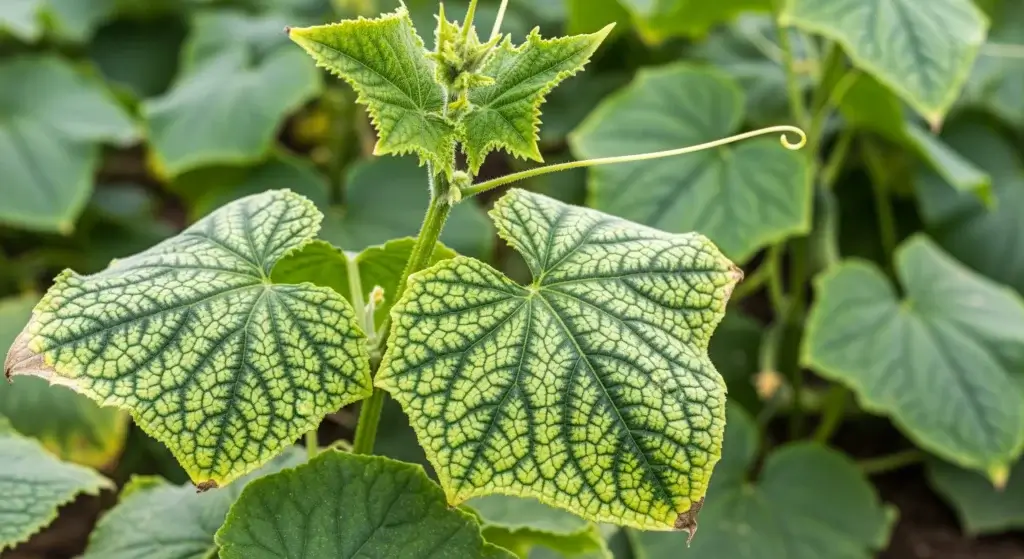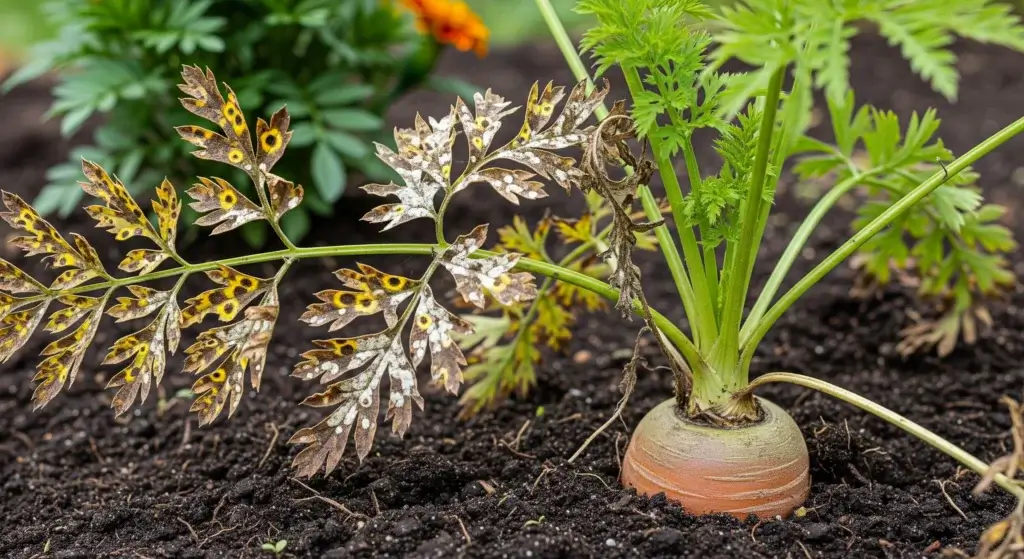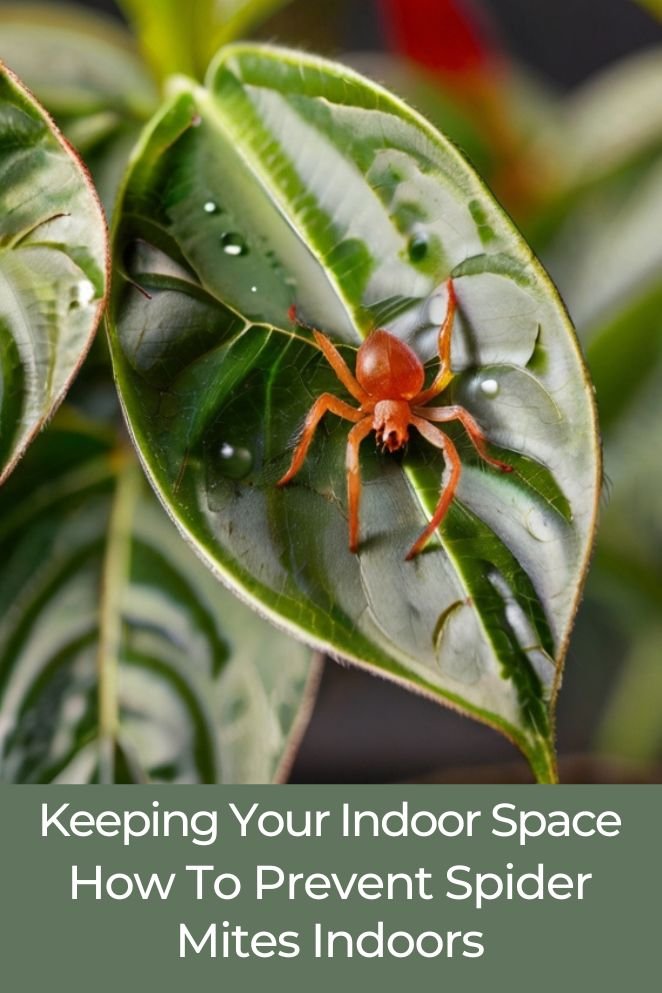
Welcome to the ultimate guide on how to protect your indoor plants from the pesky invaders known as spider mites.
These tiny arachnids might seem harmless at first glance, but they can wreak havoc on your beloved greenery if left unchecked.
Fear not, as we’ll equip you with the knowledge and tools necessary to keep spider mites at bay and maintain a thriving indoor garden.
What are Spider Mites
Spider mites are tiny, eight-legged menaces that love to munch on houseplants.
While they aren’t actually insects, they are related to spiders and ticks (all arachnids).
- Read also: Effective Homemade Spider Mite Killer
- Read also: Natural Pesticides for Indoor Plants
Size and appearance
Spider mites are incredibly small creatures, barely visible to the naked eye, measuring less than 1/20th of an inch long.
They come in various colors, including red, green, yellow, and brown, depending on the species.
Feeding habits
These pesky pests survive by feasting on the vital fluids of plants. Using their sharp mouthparts, they pierce the leaves and suck out the juices, leaving behind a trail of destruction.
Rapid reproduction
One of the most troubling aspects of spider mites is their astonishing reproductive rate. A single female mite can lay hundreds of eggs within a matter of days, leading to explosive population growth.
Webbing
As if draining the life out of plants wasn’t enough, spider mites also spin fine silk webs on the foliage. These webs serve multiple purposes for the mites, including protecting them from predators and providing a secure environment for breeding.
Adaptability
Spider mites are resilient creatures capable of thriving in various environments. They can survive in both warm and cool climates, as well as low humidity conditions, making them a year-round threat to indoor plants.
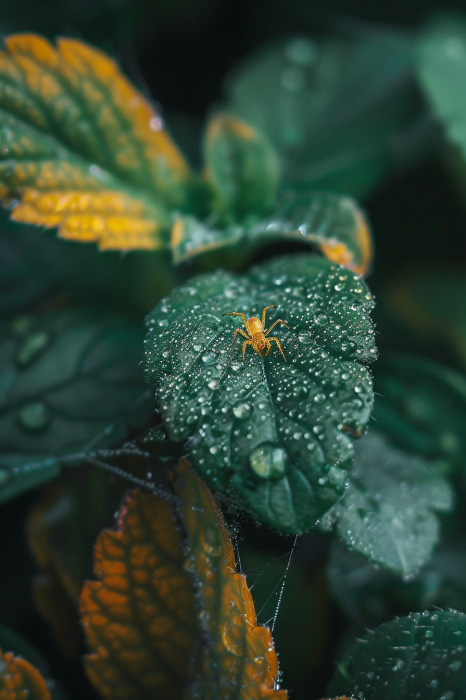
Common Indoor Plants Susceptible to Spider Mite Attacks
While spider mites are not picky eaters and can infest a wide variety of plants, some indoor plants are more susceptible to their attacks than others.
This is often due to the plant’s natural preference for drier conditions, which spider mites love.
Here are some common indoor plants that are frequently targeted by spider mites:
- Spider plants
- Peace lilies
- Ficus trees
- Ivy
- Roses
- Orchids
- Croton
- Schefflera (the umbrella plant)
- Monstera Deliciosa
- Fiddle Leaf Fig
Creating an Unwelcoming Environment for Spider Mites
To deter spider mites from taking up residence in your indoor garden, it’s essential to make the environment as unwelcoming as possible for these pests.
Here’s how you can achieve that:
Maintain optimal humidity levels
Spider mites thrive in dry conditions where humidity levels are low.
By increasing the humidity in your indoor space, you can create a less hospitable environment for these pests.
One way to increase humidity is by placing a tray of water near your plants or using a humidifier.
Misting the air around your plants with water can also help raise humidity levels.
Enhance airflow
Proper ventilation is essential for both plant health and discouraging spider mite infestations.
Adequate airflow makes it difficult for spider mites to establish colonies and spread throughout your indoor garden.
You can enhance airflow by placing fans strategically around your indoor space or opening windows and doors to promote natural ventilation.
Avoid overcrowding plants, as this can impede airflow and create stagnant areas where spider mites thrive.
Regularly clean plant leaves and surrounding surfaces
Spider mites love to hide in dusty, debris-laden areas, so keeping your indoor garden clean is key to discouraging infestations.
Use a soft cloth or sponge dampened with water to gently wipe down plant leaves and remove any accumulated dust or dirt.
Pay special attention to the undersides of leaves, as this is where spider mites often congregate.
Vacuuming or sweeping the area around your plants regularly can also help eliminate hiding spots for spider mites and disrupt their breeding grounds.
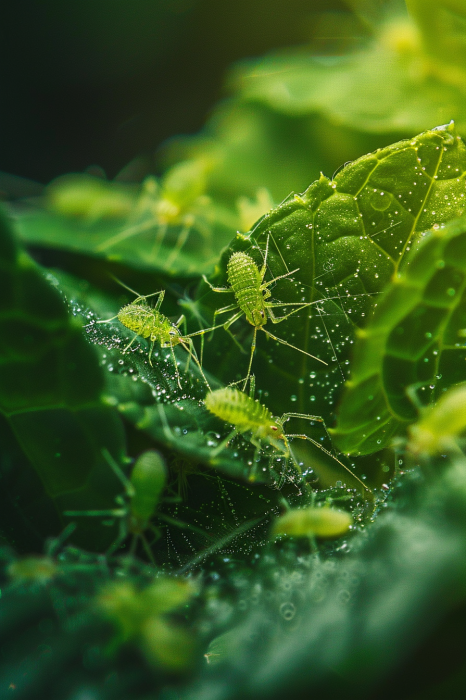
Proactive Measures to Keep Spider Mites Out
Preventing spider mites from invading your indoor oasis requires proactive measures and a keen eye for potential threats.
Here’s a closer look at some effective strategies to keep these pesky pests at bay:
Inspect new plants
Before adding a new plant to your indoor collection, take the time to thoroughly inspect it for any signs of spider mite infestation.
Look for telltale indicators such as fine webbing on the leaves, stippling or discoloration, and clusters of tiny dots (which are actually the mites themselves).
Isolate new plants for a few weeks before introducing them to your existing greenery to prevent the spread of potential pests.
Regular plant inspection
Early detection is key! Regularly inspect your plants, especially the undersides of leaves, for signs of infestation like stippling (tiny yellow or white dots), webbing, or discoloration.
Sticky traps for monitoring
Sticky traps placed near your plants can act as early warning systems, catching any spider mites before they become a major problem.
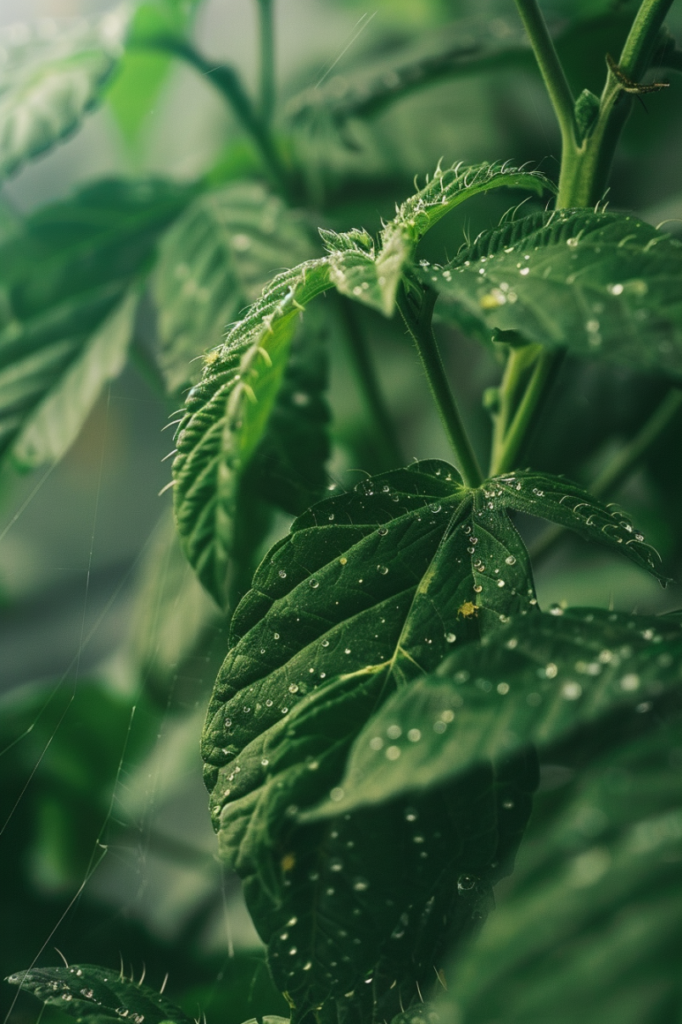
Cultural Practices for Long-Term Prevention
Long-term prevention of spider mite infestations in your indoor garden involves adopting cultural practices that promote plant health and resilience.
Here’s a detailed look at these practices:
Rotate plants regularly
Moving your plants to different locations within your indoor space on a regular basis can disrupt spider mite habitats and prevent infestations from establishing themselves.
Spider mites tend to thrive in stagnant environments, so by rotating your plants, you create an unpredictable environment that makes it difficult for these pests to settle in and reproduce.
Practice proper watering and fertilization
Maintaining proper watering and fertilization practices is essential for keeping your indoor plants healthy and resilient against spider mite infestations.
Overly dry or waterlogged soil can stress plants, making them more vulnerable to pest attacks.
Be sure to water your plants consistently, allowing the soil to dry out slightly between waterings to discourage spider mites.
Similarly, providing your plants with balanced nutrition through appropriate fertilization helps them maintain optimal health and vigor, making them less attractive to pests like spider mites.
Educate yourself
Knowledge is power when it comes to spider mite prevention.
Stay informed about spider mite identification, behavior, and prevention techniques to effectively protect your indoor garden.
Learn to recognize the early signs of spider mite infestations, such as webbing on plant leaves, stippling, or discoloration.
Regularly inspect your plants for these indicators and take prompt action if you suspect an infestation.

- Read also: A DIY Guide to Spider Mite Spray
- Read also: Clover Mite vs. Spider Mite: Understanding the Differences
Conclusion
Protecting your indoor plants from spider mites requires diligence and proactive measures.
By creating an unwelcoming environment, implementing preventive strategies, and adopting long-term cultural practices, you can safeguard your indoor plants and enjoy a thriving garden year-round.
FAQs
While spider mites can be destructive to plants, they pose no direct threat to humans. However, their presence can trigger allergies or asthma in some individuals.
Completely eliminating spider mites from your indoor garden can be challenging due to their rapid reproduction rate. However, with consistent preventive measures and proactive management, you can keep their populations under control and minimize damage to your plants.

